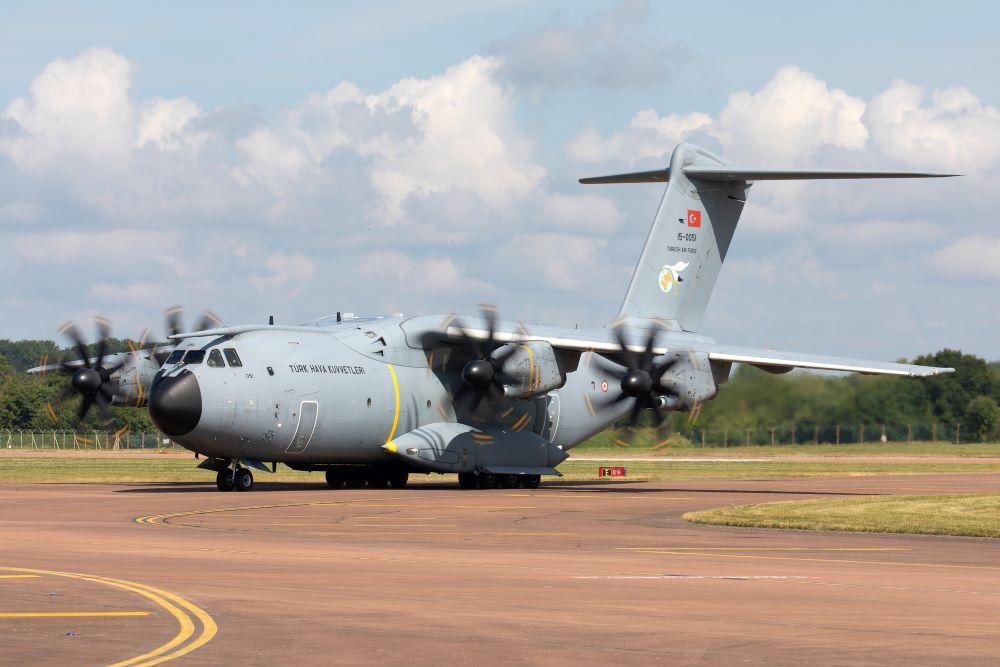
A400
FARNBOROUGH–Airbus is exploring initiatives to reduce the operation cost of its Airbus A400M airlifter, having claimed to put many of the issues that impacted the type’s service introduction behind it.
Jean-Brice Dumont, the head of Air Power at Airbus Defense and Space, told journalists on the fourth day of the Farnborough Airshow here that the airlifter previously had a “reputation” during its initial service entry with availability issues.
“That is behind us ... now the aircraft is there, it does the job, and it does many jobs,” Dumont told journalists.
“With the major issues behind us ... we are going down the cost curve and trying to find a way to minimize any downtime,” he added.
Since the type’s introduction into service, initially with the French Air Force in 2014, Dumont says the company has closed around 138 maturity topics.
Now he says efforts are focused on optimizing the aircraft’s maintenance plan around its systems, engines and propellers.
“I think we [are] already reaching availability rates and cost of ownership which are kind of benchmark, but we believe we can do more,” Dumont said.
Among the challenges previously experienced by air forces are the inspection regimes around components, particularly for the engine, propeller and propeller shafts associated with the Europrop TP400 turboprop engine. Airbus is also continuing retrofit programs to bring earlier standard aircraft up to those currently rolling off the production line.
Such maturity efforts will be critical in the company’s efforts to export more of the aircraft. Airbus’ Seville, Spain, production line is currently producing around eight aircraft a year, with 126 already delivered and another 52 to deliver, including aircraft for Indonesia and Kazakhstan. Kazakhstan has ordered two A400Ms, and the first example is already test flying in Seville.
Dumont says the A400M is involved in several ongoing export campaigns, largely in the Middle East and Asia-Pacific. He also noted that there were opportunities for top-up orders, notably for the UK, which is examining the potential purchase of an additional six aircraft, while Turkey wants to add to its existing fleet of 10.
Opportunities have been buoyed by global instability, with Dumont saying that nations want to be able to deploy their forces faster. He pointed to current exercises in the Asia-Pacific, where France, Germany and Spain currently have A400Ms deployed. In May, France used its A400Ms to deploy troops and equipment to quell a series of riots in New Caledonia with the European Air Transport Command, the organization that directs the air transport assets of seven European nations. Seven A400M Atlas aircraft transported four helicopters 19,000 km (11,806 mi.) to Nouméa, the capital of the French island.
The company is also still working on finalizing delivery of the promised full capability configuration, Aviation Week reported earlier at Farnborough.
While many of the elements of the so-called SOC3 standard (for standard operating capability) are in place, a few still need to be fully validated, such as helicopter air-to-air refueling. Airbus officials said the SOC3 work should take about two more years.





